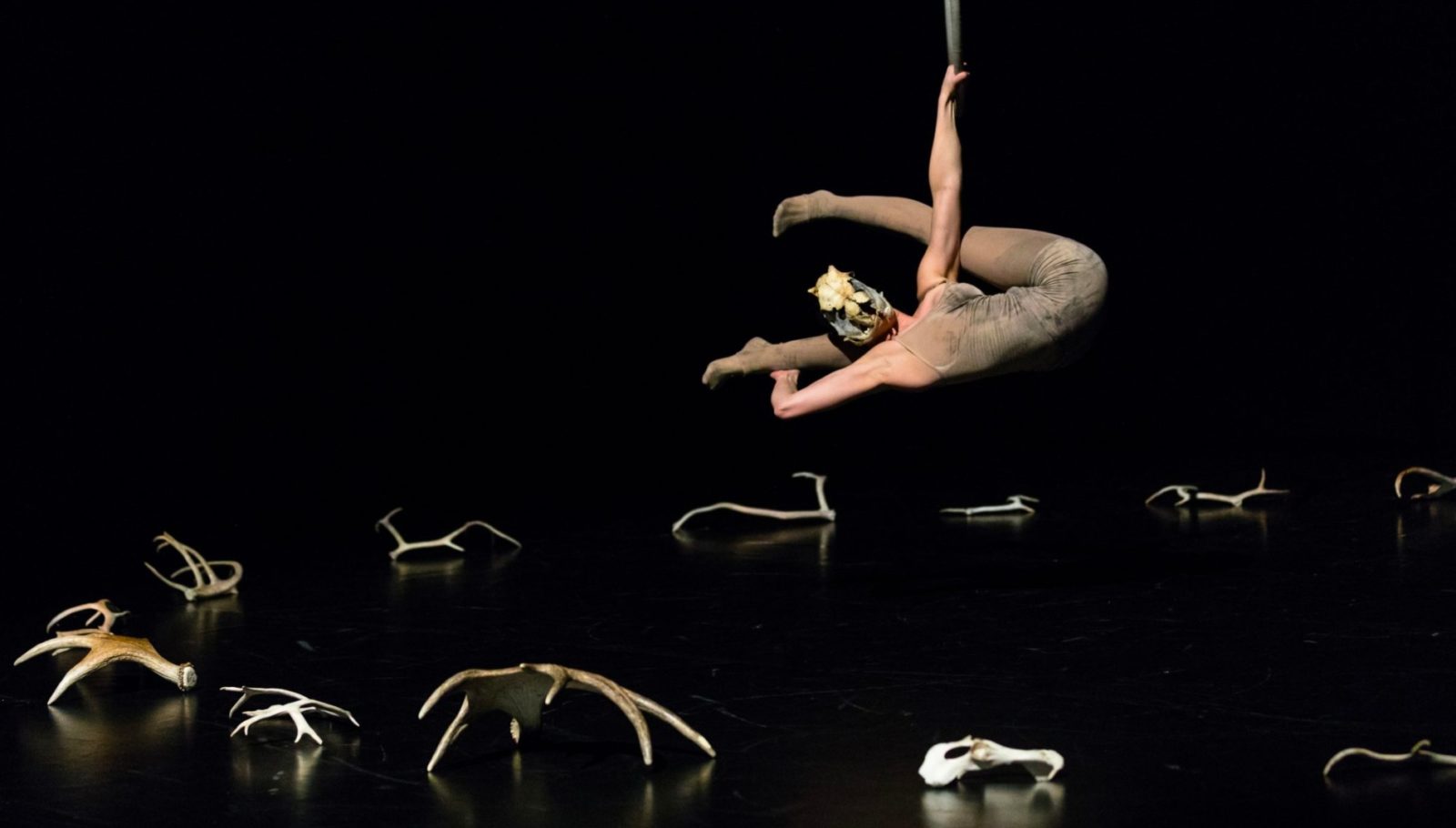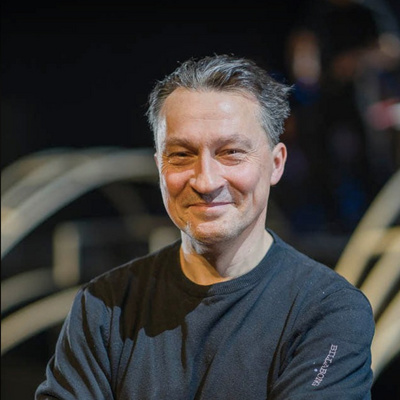Widening the Scope of Circus

I have made my career as a dancer, physical theatre performer, director, and teacher. In 2005, I joined Salpaus Circus Artist Education (SaSaK), a vocational-level circus school in Lahti, as a teacher for dance and expression. Since 2005, SaSak has included contemporary dance and expression in its circus training curriculum. Witnessing the latest results of combining the two artistic forms has made me consider that this current form of physical expression could provide a new direction and opportunities for both circus and dance.
Today’s circus students seem to enjoy contemporary dance classes because for many of them, it has brought another, perhaps more artistic and personal way of expressing themselves. One reason for this could be that circus today does not solely aim at presenting circus tricks in a traditional entertainment style, where the primary objective is achieving the “wow” moment of usually the final or most dangerous trick. Circus today more often looks towards contemporary dance for tools with which to work, in order to restart or reshape the idea of the traditional circus act. There is now a need to develop a moving body with its own individual movement-based virtuosity, combined with a type of dramaturgy that escapes the stereotypical order of creating and presenting circus tricks. As Sean Gandini, co-founder of Gandini Juggling, stated: “In circus we are imprisoned by our skill much more than in other disciplines”.
Gandini has found methods to escape those limitations by becoming what he calls “a joyous collaborator” with other art forms, including contemporary dance. In 2022, Gandini challenged his company to dance Merce Cunningham’s choreography, while at the same time juggling various objects. What is interesting about this particular artistic project is that the company’s circus artists had to learn contemporary dance, and the dancers, object manipulation. Learning Cunningham’s technique, a movement method of its own, was certainly a big artistic journey for Gandini’s company. The work was created as a tribute to the legendary choreographer, after being given permission by the Merce Cunningham Trust, and was performed at the London Mime Festival in January 2022.
What is interesting about this particular artistic project is that the company’s circus artists had to learn contemporary dance, and the dancers object manipulation.
My question therefore is: how much do we see circus education today embracing and supporting the evolving contemporary dance, and vice versa; is there room to involve aspects of circus in dance education? Although many dance schools already incorporate floor acrobatics into their curriculum, they could also consider adding object manipulation, balance, handstand, and aerial acrobatics.
The youth circus schools in Finland began to see how circus and dance education could be combined in 2006. This awareness began when SaSaK students performed “Duzina,” a show combining different circus disciplines and various dance forms, at the annual Youth Circus Festival organized by the Finnish Youth Circus Association in Rovaniemi that year. The show sparked curiosity at the time, and as a result, many schools began to include dance in their educational programme. For example, Martina Linder, Director of Circus Helsinki, states that they began including dance in their curriculum in 2007.
Over the past 15 years, all the larger youth circus schools in Finland have sought to include some form of dance as part of their curriculum, often taught once a week by a dance teacher. As a result, Finnish contemporary circus pedagogy combining circus techniques with contemporary dance, and dance in general, has become more widespread. Consequently, a variety of movement vocabularies and creative expressions combined with circus tricks has become more common in youth circus. Additionally, this has opened the young students’ minds to other possibilities in circus. One example of this new thinking is that many young students want to express dance without circus props or trick content in a group choreography. Another example is the widening interest in other contemporary art forms such as design and sculpture.
However, this phenomenon only really began to gain momentum during the middle of the last decade, meaning that the young artists learning circus skills in various circus schools up until then were rarely exposed to other artistic disciplines within circus education. For example, Laura Savolainen, a tightwire artist who learned the basic circus techniques at Sorin Sirkus – a reputed youth circus school in Tampere – stated that the contemporary dance, expression, and circus improvisation classes she took in Lahti circus school marked the beginning of an artistic journey, which led her to combine tightwire technique with contemporary dance and expression. For her, the goal was to create sequences of both circus technique and dance movement in order to expand her expression of the tightwire discipline. Thereafter she continued her studies at Stockholm University of Circus Arts (SKH), a well-known institution for both circus and dance education, and is currently performing in Sirkus Finlandia.
So, what about a circus artist who combines high-level circus skills with high-level contemporary dance and expression, and vice versa?
Another example of an artistic journey to highlight is that of Salla Santanen, a dancer who decided to include circus in her training. She states that there was not really any connection to circus during her dance studies, except for some acrobatics. In her experience, not many dance schools providing basic education in the arts offered both dance and circus studies. Salla started circus lessons at Kuopion Sirkus during her dance pedagogy studies at Savonia University of Applied Sciences, out of interest in using her body in different ways, and in order “to have a counterbalance for all that leg work,” as she put it. She adds: “I value that choice of focus, where the students are encouraged to create their own movement material and to trust their ability to create something in the moment, and to be present in unplanned situations.” In Salla’s case, this artistic encouragement happened in the context of both her contemporary dance education and her circus education at SaSaK. This is an excellent example of the complimentary educational bridge between dance and circus. Salla wishes to retain the aforementioned fundamental principles now that she teaches contemporary dance to circus artist students, and in her own work as a circus artist.
At a recent international circus convention in Sweden, I talked to other participants, myself curious about how common it is to find contemporary dance included in the curricula of higher education circus schools in other countries. Isabel Joly, Director of FEDEC – European Federation of Professional Circus Schools – responded: “All the higher education schools do offer some dance education. Those connected to a university have common courses with students of the dance department. For example, ESAC (École supérieure des Arts du Cirque) in Brussels gives a priority to the way the auditioning candidates move or dance.” Here in Finland, the Turku University of Applied Sciences Circus Department follows this same practice by teaching contemporary dance and expression.
In today’s artistic world, versatility appears not only to be a way of self-improvement, but it can also enable an artistic career. Having diverse skillsets means one can adapt more easily to the needs of a circus company, a dance company, or a physical theatre company, or perform in musical theatre or in opera, as a circus or dance artist. I would suggest that being highly skilled and versatile can be an excellent way to forge a career path. In musical theatre, a “triple threat” is a performer who can act, sing, and dance. This type of diversity is also present in music where multi-instrumentalists can more easily find work in different types of bands or orchestras. So, what about a circus artist who combines high-level circus skills with high-level contemporary dance and expression, and vice versa? Is this a new hybrid of the “triple threat”? And if so, is this versatility more likely to be rewarded with paid work opportunities? It is a difficult question to answer for a career in the arts, and by that, I mean that earning a living while having longevity as a performer, choreographer, director, or teacher, is never a certainty.
However, if one of the goals of contemporary circus and dance education is to enable graduating students to have a strong foundation for a sustainable, independent, and collaborative practice based on inclusivity, and where differences are embraced, in the ever-changing world of the performing arts, then I am convinced that a versatile artist will succeed in having a career.
This performer is multifaceted, versatile in mind and body, and provides choreographers, directors, and audiences with intriguing possibilities.
As a former performer and dancer, and, at the same time witnessing the audiences’ response to new circus – especially when it is able to include the movement energy of contemporary dance and expression into the circus work – I believe that combining these art forms introduces a direction for a new type of physical performer. This performer is multifaceted, versatile in mind and body, and provides choreographers, directors, and audiences with intriguing possibilities.
Something as pure as the body moving in a contemporary dance style combined with an object, or a rope, or a rotating Cyr wheel (large metal ring) may be considered absurdly old-fashioned. Nevertheless, the audiences find it thoroughly absorbing and breathtakingly elegant; new Finnish circus has more performances and spectators than ever before.
Currently there are some new circus performers who have decided to venture even further into the unknown, transforming themselves and their art form through introducing contemporary dance and expression into their circus vision. This is when circus is creating a new type of performer, which is truly inspiring for the audiences. As a consequence, there looms a promising future for the next generation of both circus artists and dancers in terms of creativity, innovation, and employment opportunities.
This article was originally published at Teme on September 19, 2022, Finland's largest art and culture trade union. Teme represents workers, artists and self-employed people in the performing arts, film and TV industry. Main image: Salla Santanen's work "Soloteos." Photo by Mikko Pirinen .
Editor's Note: At StageLync, an international platform for the performing arts, we celebrate the diversity of our writers' backgrounds. We recognize and support their choice to use either American or British English in their articles, respecting their individual preferences and origins. This policy allows us to embrace a wide range of linguistic expressions, enriching our content and reflecting the global nature of our community.
🎧 Join us on the StageLync Podcast for inspiring stories from the world of performing arts! Tune in to hear from the creative minds who bring magic to life, both onstage and behind the scenes. 🎙️ 👉 Listen now!
